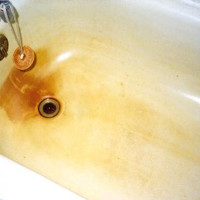How to clean plaque from bathroom tiles
Tile is a traditional, practical and aesthetic material. Its main and perhaps most important advantage is durability. But ceramics require special care, so it is important to know how to clean bathroom tiles, how to restore their shine and color saturation by removing stains and detergent residues.
Causes of pollution
To really quickly clean ceramics from plaque and dirt deposits in the bathroom, first of all, you should understand the nature of their origin, and then get to work. In the bathroom, water containing lime and various salts is systematically used. When it gets on the base, it leaves stains that resemble streaks of a light shade with a rough surface. When they accumulate, they turn into lime, which is difficult to clean.
Mold and mildew are the most dangerous stains in the bathroom
But the most serious situation is fungus, old mold, the reasons for the formation of which may include:
- increased moisture content;
- accumulation of dirt in the seams between tiles;
- systematic contact with running water;
- high temperatures;
- reproduction of microbes;
- lack of systematic care using antiseptics.
Get rid of plaque or mold immediately, otherwise it can have a detrimental effect not only on the appearance of the ceramic base, but also on your health.
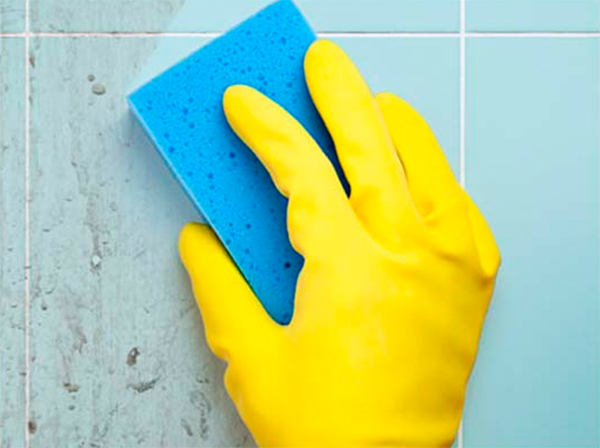
How to get rid of old mold and mildew that is harmful to your health
If things are not so bad, then you can use antifungal solutions to clean the gaps between the ceramic base, which are applied to the problem area for 30 minutes. Then everything is washed well with water and wiped dry with a sponge.
How to clean bathroom tiles if there is no special cleaning product? The well-known bleach (1 part per 10 liters of water) or soda, which neutralizes the unpleasant odor, will come to the rescue.
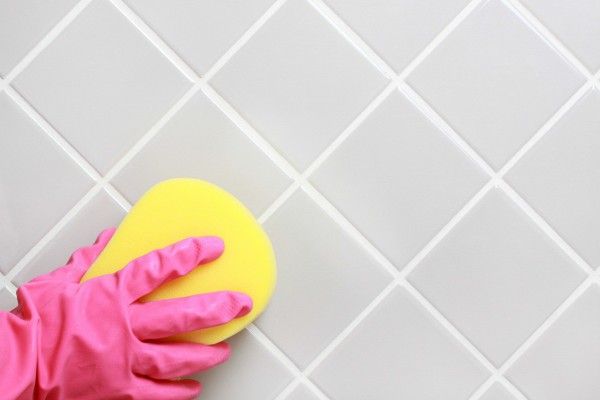
Folk remedies for removing plaque
How to wash bathroom tiles to remove lime deposits? This question interests almost every housewife. Perhaps the most common method is to clean the ceramic base with special household solutions.
You can get rid of stains or lime deposits using the following:
- lemon - to clean the ceramic base, take a fresh slice of lemon and rub it on the problem area. You can add lemon juice to the water, then treat the tiles on the floor and walls; after this treatment, the room will be filled with an exquisite citrus aroma;
- Baking soda and vinegar are an excellent way to get rid of deposits and dirt at home. The reaction that occurs due to the mixing of these two products softens the deposits. Soda is first applied to the ceramic base, and then vinegar is sprayed;
- ammonia - not only will get rid of plaque, but with its help you can clean the oil. Dilute alcohol in water, then apply to the surface. Everything is very simple;
- bleach - you need to wear gloves when cleaning the floor and walls to protect your hands from the harmful effects of the solution. Chlorine is good at removing limescale, but can discolor grout and damage ceramic tiles, but it is good at removing oil.
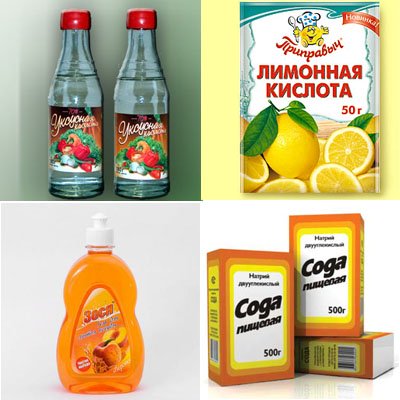 Folk remedies
Folk remedies How to clean the tiles after the repair is completed
The renovation is complete, but here’s how to clean the tiles now so that they shine by removing any remaining installation material: sealant, cement, primer, silicone glue or oil. The uncomplicated processing of tiles with a rag will not suit us:
- construction cement;
- silicone sealant;
- assembly dust, including primer;
- grout;
- dye;
- lime;
- construction foam.
Adhesive mortar and silicone sealant
If, after completing the repair, the tiles need to be cleaned of glue, you will come to try. You can use the following options:
- removing soft matter - the best way to get rid of the mortar is to wash it during laying. For this, a simple rubberized spatula, as well as a damp cloth, are suitable;
- softening - if the silicone sealant has already hardened, then it is better to use ammonia or vinegar. Acetone is suitable for polymer masses, but you should only clean the tiles carefully so as not to damage the surface;
- exposure to chemicals - silicone sealant can be removed using a special solvent-based product;
- by mechanical grinding - once the sealant softens, remove it with a hard sponge or spatula.
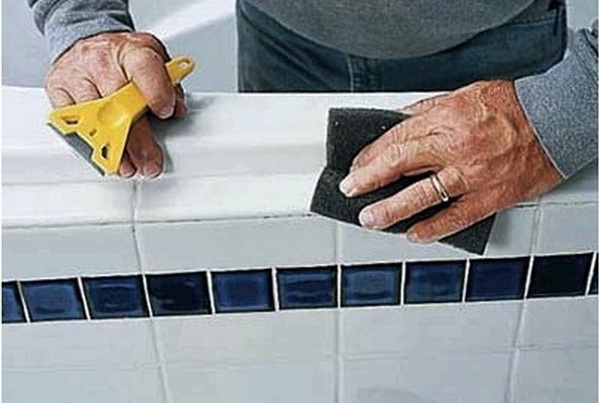 Removing silicone sealant with a spatula
Removing silicone sealant with a spatula 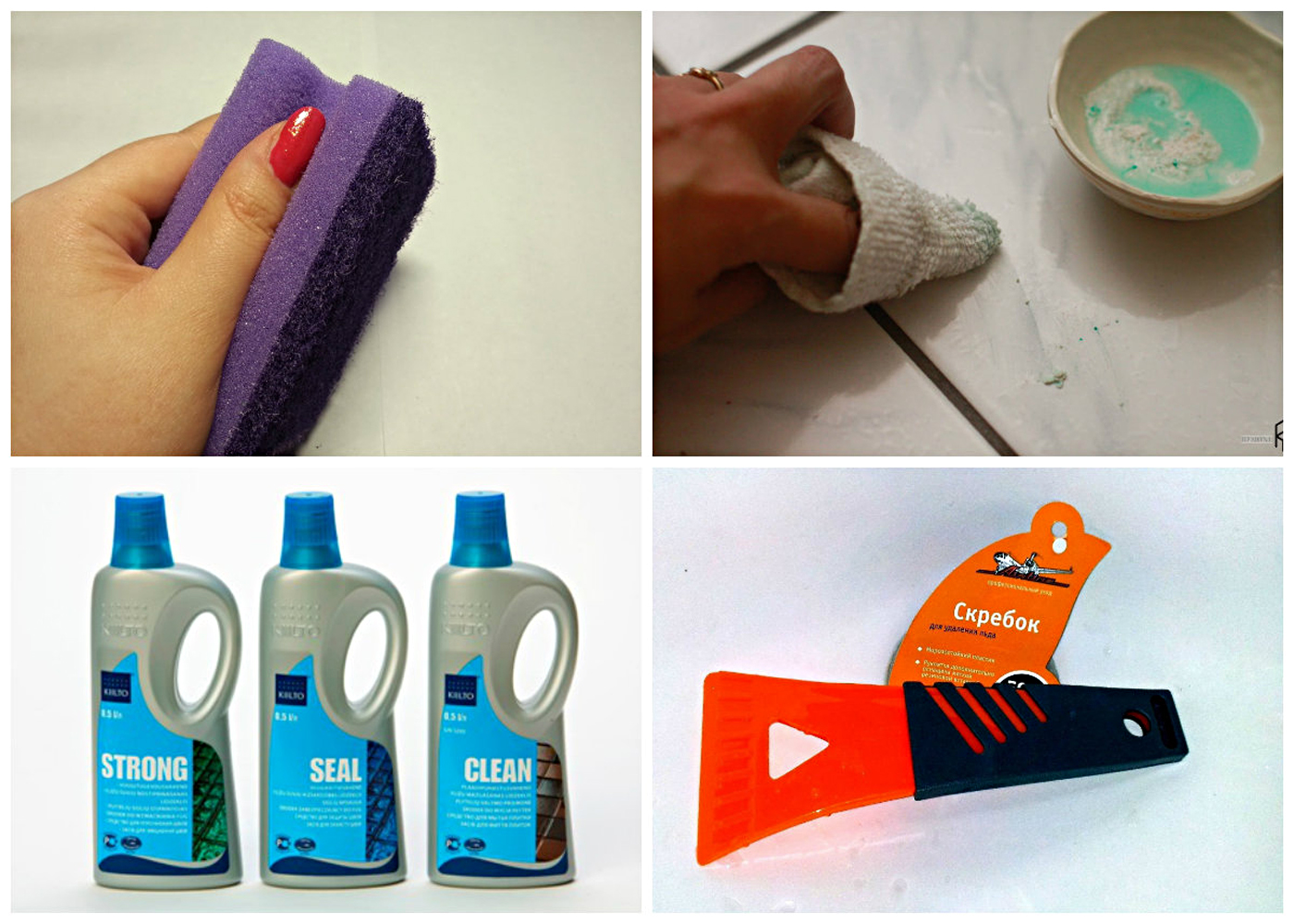 Removing adhesive from ceramic tiles will require more serious means.
Removing adhesive from ceramic tiles will require more serious means. Removing primer and cement
Do you still have white spots on your ceramics after the renovation? You can remove them using some components:
- acetone;
- special wash;
- construction foam.
Oddly enough, to remove primer or cement, it is recommended to apply fresh solution to the stain. After the composition has completely softened, it should be cleaned well. Also, primer or cement can be easily removed using a scraper with a sharp blade.
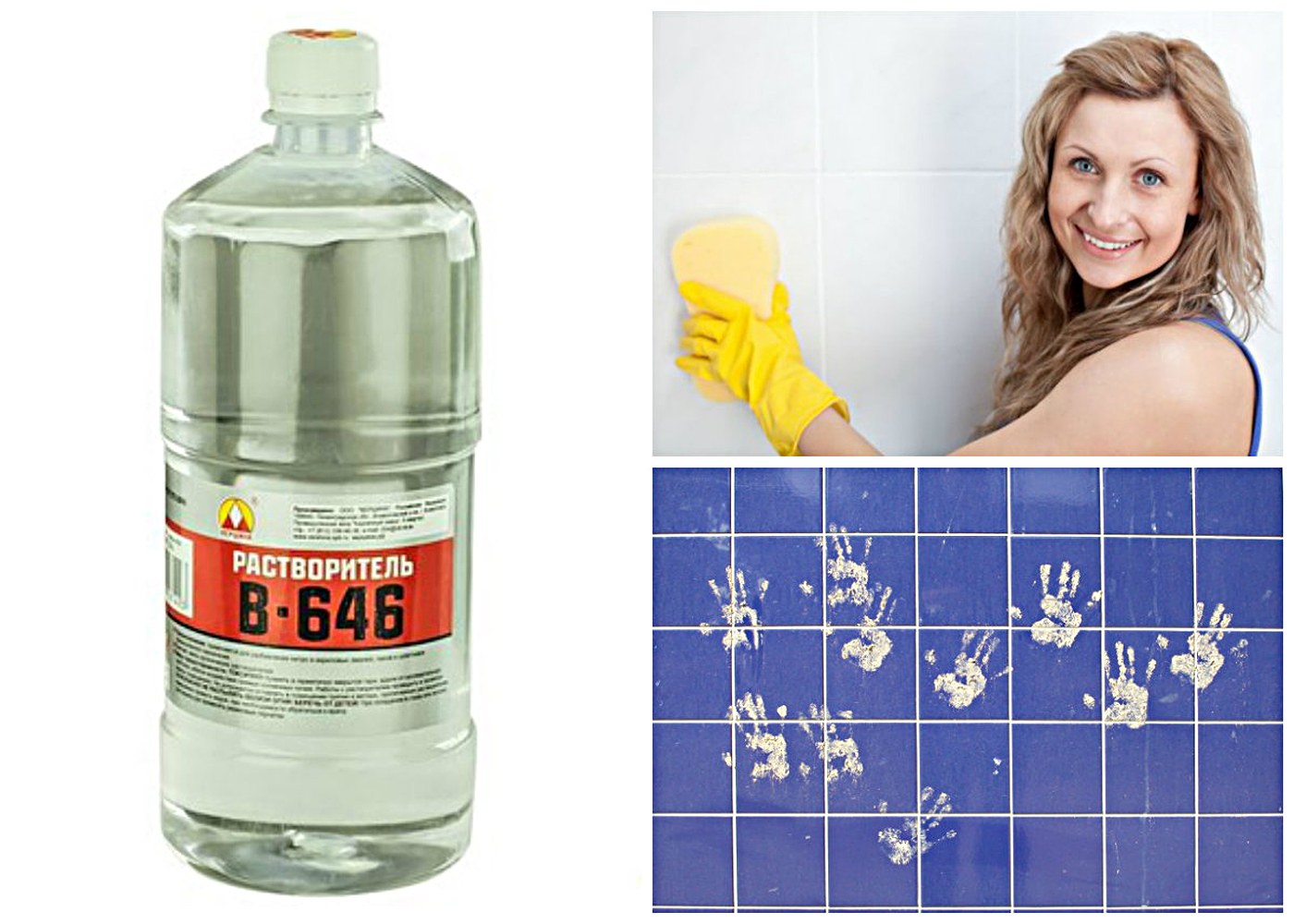 The primer is best washed off before it hardens with clean water or solvent
The primer is best washed off before it hardens with clean water or solvent Grout
At the end of the repair, you still have traces of grout; it doesn’t matter, it’s much easier to remove it than primer or cement. Removing traces of grout is as easy as shelling pears; when it becomes lighter, rinse the floor and walls with plain water. The layer will soften, then you can easily remove it like whitewash.
This method is suitable for soft composition.
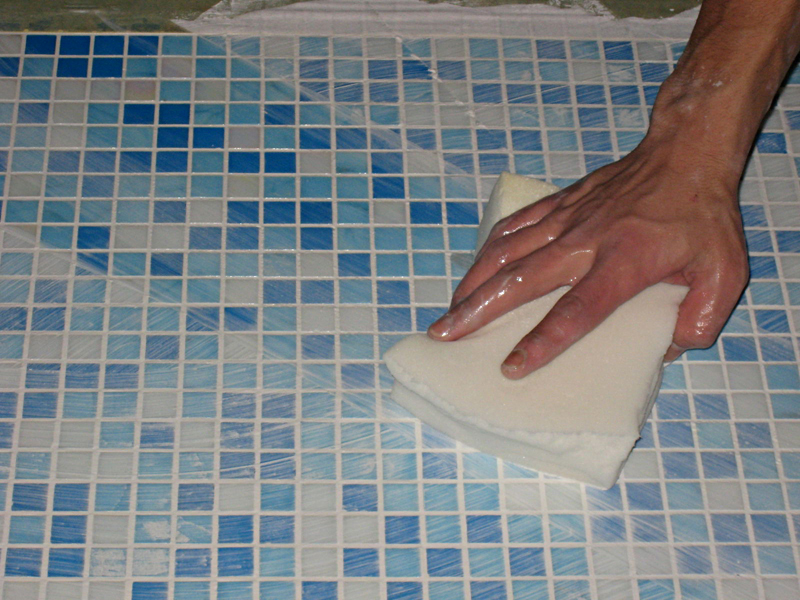 The tiles are washed off the grout with plain water immediately after repair, as soon as the top layer begins to lighten.
The tiles are washed off the grout with plain water immediately after repair, as soon as the top layer begins to lighten. Epoxy grout is much more difficult to deal with. If a drop of the substance gets on the ceramic, it is better not to suffer and purchase a special solvent. To prevent such contamination, it is better to use masking tape or film. With construction dust, everything is as simple as shelling pears; any household chemicals will do.
Preventive measures
Systematic washing of ceramics will allow you to constantly maintain perfect order in the bathroom. Wipe the floor and walls with dry soft cloths. Thanks to this, drips or limescale will not turn into dried drops, which look so unaesthetic. If dirt irritates you very much and you want the base to shine, then a glass treatment liquid or any other non-aggressive detergent is suitable.
If you want the floor to shine, then baking soda, dishwashing detergent, mirror and window cleaner will do. You can remove stains with a soft cloth soaked in vinegar, previously diluted with water 1 to 5. To remove grease, it is recommended to use a pure oxidizing agent.
If you need it, then there is no better way than a solution of water and chalk.
 It is best to remove dirt on the tiles immediately with clean water.
It is best to remove dirt on the tiles immediately with clean water. Professional cleaning compounds
Any store offers a huge selection of cleaning agents. But when purchasing them, you should adhere to the following recommendations, namely:
- choose cream-shaped or liquid formulations, as the powder leaves small scratches on the surface;
- a composition containing chlorine is perfect, which neutralizes contaminants and disinfects the room;
- Products with chalk are not recommended, as it leaves streaks;
- a product with alkali and acid is also not suitable for caring for walls and floors, because it can harm the tile joints;
- You should also refrain from purchasing organic solvents.
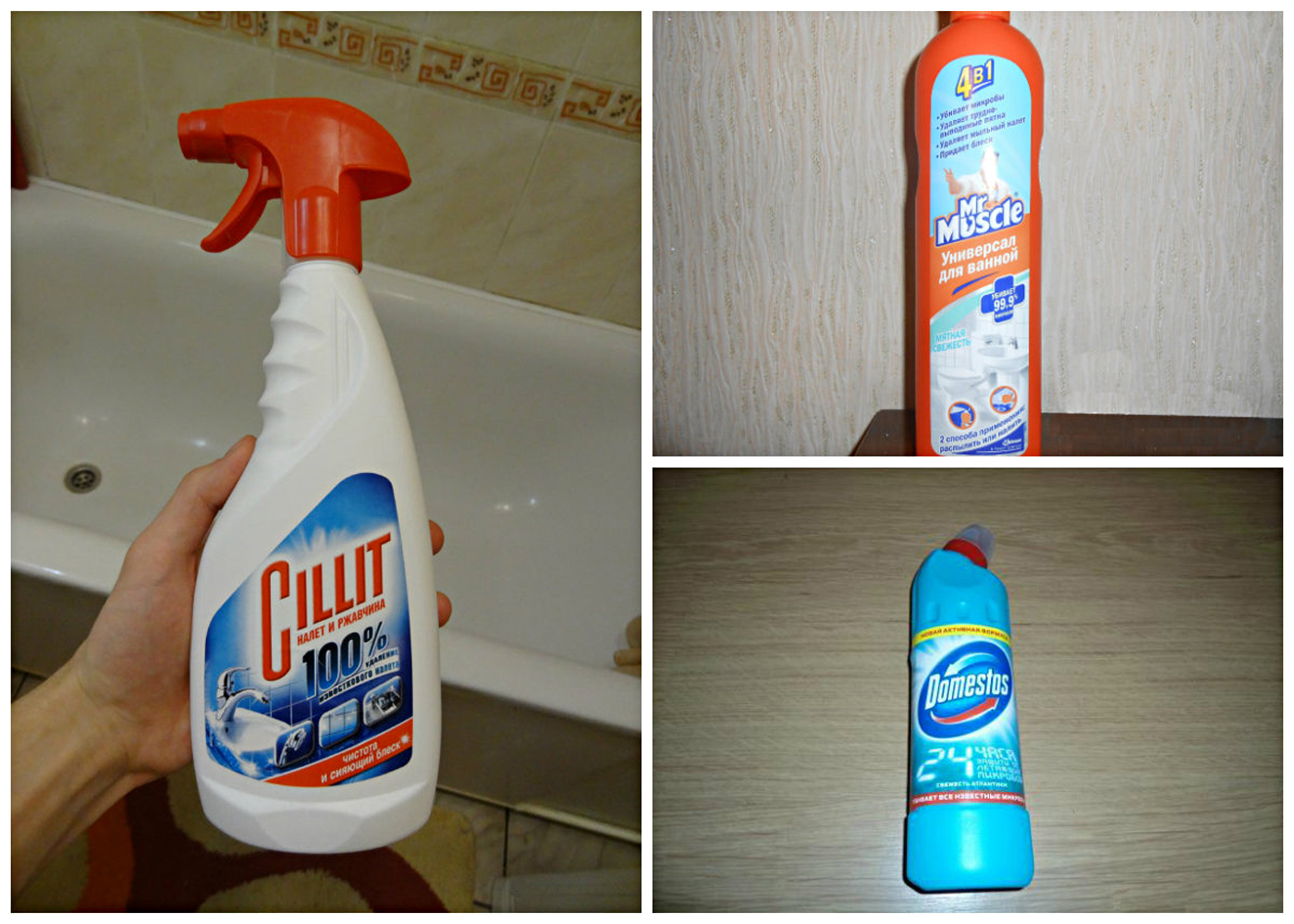 The most popular tile cleaners
The most popular tile cleaners From the above, only one conclusion can be drawn: it is quite possible to remove old stains and traces of repairs from the surface of the tile, to clean the tile so that it shines, but this will require some effort and, most importantly, time, which we often do not have enough. Do not allow ceramics to get too dirty and take care of it daily. This will prevent unnecessary and unnecessary material costs.
